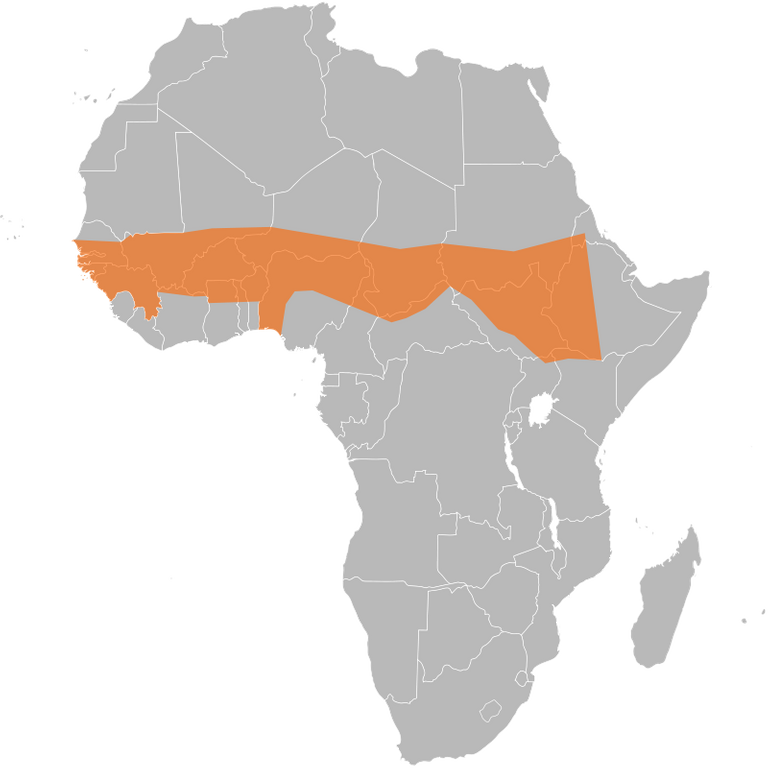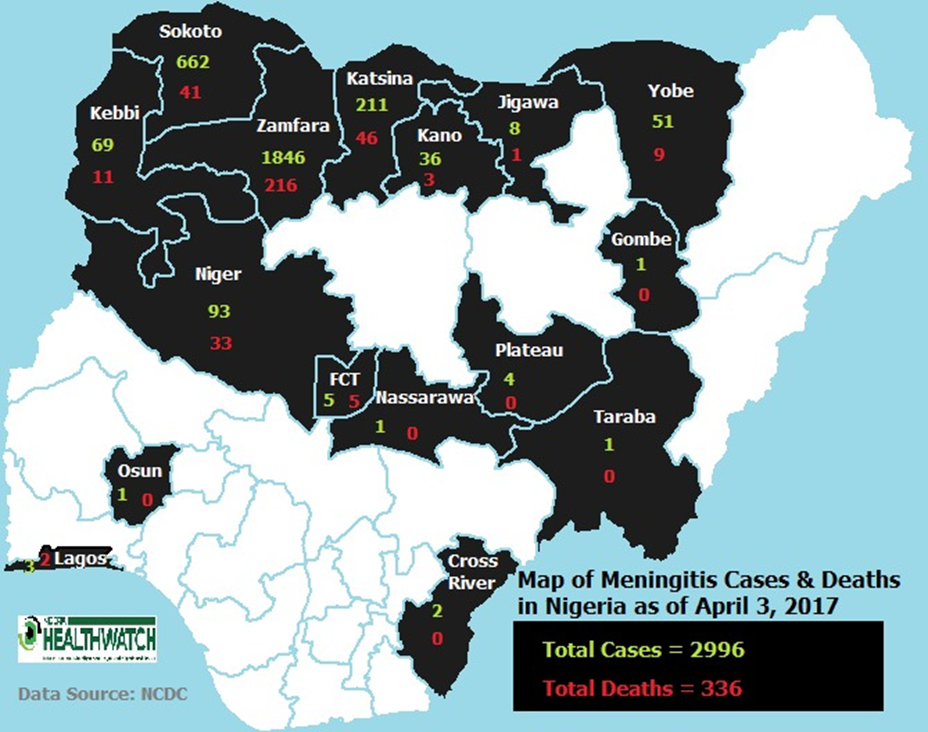Hello Hivers!
In today's article, I'll explore meningitis. I have seen a lot of cases personally in the clinic and have part of the management team of some. Meningitis exerts a heavy burden on health care in Sub-Saharan Africa.
Meningitis is observed worldwide but the highest burden of the disease is in the meningitis belt of sub-Saharan Africa, stretching from Senegal in the west to Ethiopia in the east. Around 30,000 cases are still reported each year from that area.

Neck stiffness, Texas meningitis epidemic of 1911–12. By L.A. Marty, M.D, Kansas City - Sophian, Abraham: Epidemic cerebrospinal meningitis (1913), St. Louis, C.V Mosby (Scan from archive.org)., Public Domain, Link
Bacterial Meningitis
Bacterial Meningitis
The highest incidence is among neonates, who are usually infected by bacteria found in the birth canal at the time of parturition. Group B streptococci (Streptococcus agalactiae) account for the majority of cases; other causes include Listeria monocytogenes, E.coli, other Gram-negative bacilli, and enterococci.
From age 1 to 23 months, the most common organisms are Streptococcus pneumoniae and Neisseria meningitidis
Children from the 2 - 5 years used to have a high rate of infection caused by Haemophilus influenzae type b. However the wide use of protein-polysaccharide conjugated vaccines has dramatically reduced the incidence of this infection.
From age 2 through 18, N. meningitidis is the most common cause, accounting for more than 1/2 of cases, followed by S. pneumoniae
In adults up to age 60, S. pneumoniae is most common followed by N. meningitis.
Over age 60, most cases are due to S. pneumoniae and less often L. monocytogenes
Epidemiology
Epidemiology
 The meningitis belt, showing the distribution of meningococcal meningitis in Africa. By Ninjatacoshell - Own work, derived from File:BlankMap-Africa.svg, CC BY-SA 3.0, Link
The meningitis belt, showing the distribution of meningococcal meningitis in Africa. By Ninjatacoshell - Own work, derived from File:BlankMap-Africa.svg, CC BY-SA 3.0, Link
In the meningitis belt, serogroup A has historically accounted for 90% of meningococcal disease cases and the majority of large-scale epidemics. In the past, Nigeria has suffered large-scale outbreaks of meningitis A. In 2009, such an outbreak in the country caused over 55,000 cases with close to 2,500 deaths.

Source: Nigeria Center for Disease Control
The rates of meningococcal disease are highest in young children because of their reduction of protective maternal antibodies and then increasing again for adolescents and young adults
Vaccines
There are vaccines against Haemophilus influenzae type b (Hib) and against some strains of N. meningitidis and many types of Streptococcus pneumoniae.
The vaccine against haemophilus influenze (Hib) has reduced Hib meningitis cases by 95 percent since 1985. There are vaccines to prevent meningitis due to S. pneumoniae.
The pneumococcal polysaccharide vaccine is recommended for all persons over 65 years of age and younger persons at least 2 years old with certain chronic medical problems.
Meningococcal vaccines are active against many strains of N. meningitidis. The majority of meningococcal infections in Nigeria was caused by type B meningococcus. The present menigitis C epidemic is not new and a vaccine is available.
Conclusion
Conclusion
REFERENCES
REFERENCES
- World. Meningococcal meningitis [Internet]. Who.int. World Health Organization: WHO; 2018. Available from: https://www.who.int/news-room/fact-sheets/detail/meningococcal-meningitis
- The Meninges - Dura - Arachnoid - Pia - TeachMeAnatomy [Internet]. Teachmeanatomy.info. 2019. Available from: https://teachmeanatomy.info/neuroanatomy/structures/meninges/
- Bijlsma MW, Brouwer MC, Kasanmoentalib ES, et al. Community-acquired bacterial meningitis in adults in the Netherlands, 2006-14: a prospective cohort study. Lancet Infect Dis 2016; 16:339.
- Boisson C, Arnaud sophie, Vialet R, Martin C. Severe community-acquired meningitis. Critical Care. 1999;3(4):R55.
- Meningococcal [Internet]. Centers for Disease Control and Prevention. 2019. Available from: https://www.cdc.gov/meningococcal/global.html
- Ahmed-Abakur EH. Meningococcal Meningitis: Etiology, Diagnosis, Epidemiology and Treatment. American Journal of Medicine and Medical Sciences [Internet]. 2014 [cited 2020 Jul 10];4(6):266–271. Available from: http://article.sapub.org/10.5923.j.ajmms.20140406.13.html
- Medical Definition of MENINGISMUS [Internet]. www.merriam-webster.com. [cited 2020 Jul 10]. Available from: https://www.merriam-webster.com/medical/meningismus#:~:text=Medical%20Definition%20of%20meningismus
- Shiel WC. Medical Definition of Kernig sign [Internet]. MedicineNet. MedicineNet; 2018. Available from: https://www.medicinenet.com/script/main/art.asp?articlekey=7305
- Leigh A. Diagnosis and Treatment of Viral Meningitis. AMA Journal of Ethics. 2007 Mar;9(7):497–8.
- Bacterial Meningitis [Internet]. Department of Neurology. Available from: https://www.columbianeurology.org/neurology/staywell/document.php?id=42031
- Cerebral venous sinus thrombosis [Internet]. Wikipedia. 2020. Available from: https://en.wikipedia.org/wiki/Cerebral_venous_sinus_thrombosis


All images used are copyright free
Vancouver Style was used for References.
Written by @gamsam - a Medical Student
Is the pathogen of this disease what they refer to as 'brain-eating' bacterium? I think I've heard something like that before. That's quite some prevalence statistics, unfortunately, I am not sure I have physically come across any case in reality. Nice effort!
Thanks a lot.
I think you're referring to either the "flesh eating bacteria" or the "brain eating amoeba".
They are both different from this though. I am actually going to be making a post about the flesh eating bacteria very soon.
It is unfortunate that the rate of this pathology is so great, but that is due to the conoditions of life. Very well detailed all this pathology, sincerely enjoy reading it. Thank you for this!
Yeah, very true
Thanks a lot. Glad you enjoyed reading it.
Congratulations @gamsam! You have completed the following achievement on the Hive blockchain and have been rewarded with new badge(s) :
You can view your badges on your board And compare to others on the Ranking
If you no longer want to receive notifications, reply to this comment with the word
STOPTo support your work, I also upvoted your post!
Do not miss the last post from @hivebuzz:
Support the HiveBuzz project. Vote for our proposal!
Thanks for your contribution to the STEMsocial community. Feel free to join us on discord to get to know the rest of us!
Please consider supporting our funding proposal, approving our witness (@stem.witness) or delegating to the @stemsocial account (for some ROI).
Thanks for using the STEMsocial app
and including @stemsocial as a beneficiary, which give you stronger support.
This is a well detailed piece on meningitis. Thanks also for putting out the preventive measures against meningitis.
I didn't know that these practices can remotely predispose one to meningitis.
Thanks for sharing
Thanks for stopping by.
They do not directly predispose one to meningitis, but in a way they can generally reduce our exposure to foreign microbes that can cause meningitis.